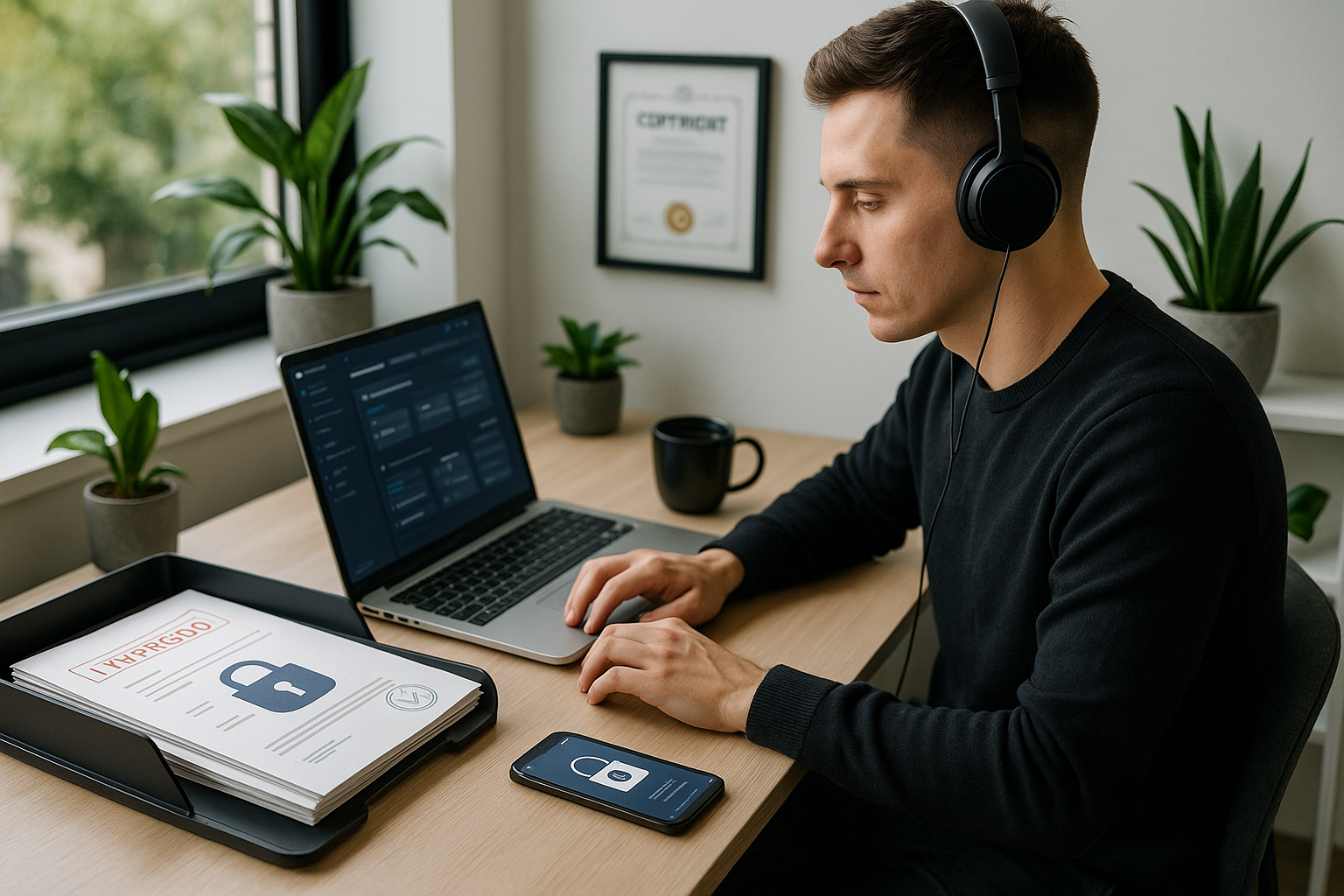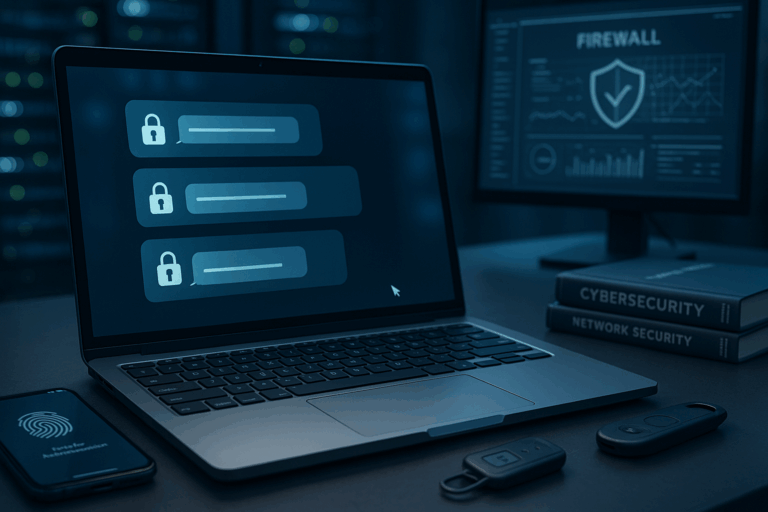It is the driving force of the digital age, powering businesses, education, entertainment, and social engagement. With its increasing value, the need to protect original content from illegal duplication and distribution has become paramount. That’s where the Digital Millennium Copyright Act (DMCA) takedown process steps in. 💼🔒
This vital legislation safeguards the rights of creators, enabling them to take swift legal action against individuals or entities infringing on their intellectual property rights. However, the labyrinthine intricacies of the DMCA takedown process can often prove daunting to content creators, a situation further exacerbated by the rapid and unyielding pace of digital evolution.
Fortunately, understanding the DMCA takedown process and applying it effectively to protect your content need not be an insurmountable hurdle. In this comprehensive guide, we will demystify the DMCA takedown process, providing you with the critical knowledge and tools to shield your digital content from unauthorized use.
We will delve deep into what the DMCA is and how it functions to protect content creators. We’ll explore how you can detect instances of copyright infringement and meticulously craft an effective DMCA takedown notice. We will also unravel the potential fallout of false claims and illuminate the process of counter-notifications. 🕵️♂️📝
Chapter 1: Understanding the Digital Millennium Copyright Act (DMCA)
To effectively harness the power of the DMCA, a comprehensive understanding of its origins, purpose, and legal implications is vital. We will dissect the DMCA, establishing a solid foundation for subsequent chapters. This section will guide you in navigating the complexities of the act, thereby enhancing your capacity to protect your digital content.
Chapter 2: Detecting Copyright Infringement
Identifying instances of copyright infringement is the crucial first step in the DMCA takedown process. Equipped with actionable tips and strategies, this chapter will help you become proficient in detecting unauthorized use of your content, ensuring you can initiate the DMCA process effectively. 👀🔍
Chapter 3: Crafting an Effective DMCA Takedown Notice
Creating an effective DMCA takedown notice is pivotal to ensuring the swift removal of infringing material. In this chapter, we will guide you through the necessary steps to draft a legally sound and compelling DMCA takedown notice, bolstering your chances of success.
Chapter 4: Consequences of False Claims and Counter-Notifications
Understanding the implications of false claims and the process for counter-notifications is integral to the DMCA process. This chapter will provide valuable insights into these aspects, empowering you to act responsibly and handle any potential counter-notifications appropriately.
This comprehensive guide aims to arm you with the requisite knowledge and skills to navigate the DMCA takedown process with confidence and proficiency. Whether you’re a seasoned content creator or a newcomer to the digital landscape, mastering the DMCA takedown process is an invaluable tool in your arsenal to protect your content. So, strap in, and let’s take a deep dive into the world of DMCA. 🏊♀️🎯
Unraveling the Intricacies of Digital Copyright Protection
With the widespread digital transformation and a steep surge in digital content creation, protecting your original work from unauthorized usage has become more crucial than ever before. Digital Copyright Protection aims to provide an umbrella of safety to original creators, safeguarding their intellectual property rights in the digital realm. This article will help you master the intricacies of the Digital Millennium Copyright Act (DMCA) takedown process, a formidable tool to safeguard your digital content.
Before diving into the DMCA takedown process, it’s essential to understand the basic tenets of digital copyright protection. The digital copyright law, a subset of the broader copyright law, protects the rights of creators over their original content disseminated over digital media. It shields against unauthorized reproduction, distribution, and display of digital content, thereby maintaining the creator’s exclusivity over their work.
One powerful instrument in the arsenal of digital copyright protection is the DMCA, enacted in 1998 to address copyright challenges in the digital age. The DMCA takedown process is a swift procedure under this law that allows content owners to request service providers to remove their copyrighted content used without permission. Understanding and mastering this process can be a game-changer for content creators and owners.
Decoding the DMCA Takedown Process
Learning how to use the DMCA takedown process effectively requires understanding its key components and underlying principles. A DMCA takedown notice is a formal request by the copyright owner to the service provider hosting the infringing content to remove it promptly. The service provider, upon receiving a valid notice, must expeditiously take down the disputed content to avail safe harbor protection under the DMCA.
To initiate a DMCA takedown process, the copyright owner must identify the infringing material and its online location, assert their copyright ownership, and submit a takedown notice to the service provider’s designated agent. This notice must be factual, detailed, and include specific elements as stipulated by the DMCA.
For a deeper understanding of the DMCA takedown process, let’s watch this comprehensive video by ‘Copyright on YouTube,’ titled ‘How to File a DMCA Takedown Notice’ that outlines the DMCA takedown process with practical examples.
Key Elements of a DMCA Takedown Notice
As per the DMCA, a takedown notice must include the following elements:
- A physical or electronic signature of the copyright owner or authorized agent.
- Identification of the copyrighted work claimed to have been infringed.
- Identification of the material that is claimed to be infringing and needs to be removed, along with its location.
- Contact information of the complaining party.
- A statement that the complaining party has a good faith belief that the use of the material is not authorized by the copyright owner, its agent, or the law.
- A statement that the information in the notice is accurate, and under penalty of perjury, that the complaining party is authorized to act on behalf of the copyright owner.
Comparing DMCA with Other Digital Copyright Protection Tools
While DMCA is a potent tool, it’s not the only mechanism available for digital copyright protection. Let’s explore and compare DMCA with two other prominent tools: Creative Commons (CC) licenses and Watermarking.
| Protection Tool | Functionality | Strengths | Limitations |
| DMCA Takedown Process | Allows content owners to request service providers to remove their copyrighted content used without permission. | Effective, swift, and covers a wide range of digital content. | Depends on service providers’ cooperation and might not work if the infringer is outside the US. |
| Creative Commons Licenses | Provide creators a standardized way to grant copyright permissions to their creative work. | Flexible and customizable, allows creators to decide how others may use their work. | Once granted, a CC license cannot be revoked. |
| Watermarking | Adds visible or invisible marks on digital content to discourage unauthorized use. | Simple and cost-effective, can deter casual infringers. | Does not offer legal protection, sophisticated infringers can remove watermarks. |
Remember, the DMCA takedown process is a reactive measure to address copyright infringement after it has occurred. As a content creator, consider also adopting proactive strategies like using CC licenses or watermarking to deter unauthorized use of your digital content.
Navigating DMCA’s Safe Harbor Provisions
Another key aspect of the DMCA is its Safe Harbor provisions that shield service providers from liability for copyright infringements carried out by their users, provided they meet certain conditions. These conditions include designating an agent to receive takedown notices, having a repeat infringer policy in place, and promptly removing infringing content upon notification.
Understanding these provisions is crucial for both content owners and service providers. For content owners, it means their DMCA takedown notices must be directed to the service provider’s designated agent and be compliant with the DMCA requirements. For service providers, it underscores the importance of implementing the necessary measures to benefit from the Safe Harbor protections.
Comprehending the DMCA takedown process and other digital copyright protection tools can help you defend your creative work from infringement effectively. Remember, protecting your digital content is not only about understanding the law but also about leveraging it to your advantage. Don’t forget to watch the video mentioned earlier to have a practical understanding of the DMCA takedown process. Keep creating, keep innovating, and let the law safeguard your creativity.

Conclusion
In conclusion, we have been able to delve deep into the world of software engineering and IT, shedding light on various critical areas. We explored the building blocks of these disciplines, breaking down complex concepts into easily digestible information.👨💻🌐
We revisited the fundamental principles of software development, looking at how systematic engineering techniques can be utilized to create, design, and manage intricate software systems. We scrutinized the intricacies of data structures and algorithms, noting their profound effect on the efficiency and scalability of a software application.✅⚙️
The necessity of network security in our increasingly digital world was also a major point of discussion. We examined the various security measures that can be employed to protect sensitive data and systems from malicious attacks. The gravity of this issue cannot be overstated – the potential consequences of a breach can be catastrophic for both individuals and businesses.🔒🌐
We also dissected the realm of IT management, highlighting the importance of strategic planning and decision-making in achieving business objectives. We emphasized the role of IT managers in the effective coordination of resources, implementation of technologies, and maintaining the overall health of an organization’s IT infrastructure.👥💼
We hope this article has provided you with a comprehensive overview of these technical areas. It’s our belief that such knowledge is crucial, not only for those working in these fields, but also for those who interact with these technologies on a daily basis. As we continue to integrate technology into every aspect of our lives, it’s imperative that we all have a basic understanding of how these systems work, how to use them effectively, and how to protect ourselves from potential risks.💡🌐
Feel free to revisit this article as a reference guide in your future endeavors. If you found this information valuable, don’t hesitate to share this post with others who might also benefit from it. Additionally, we welcome your comments and feedback. Whether you’re an industry expert or a curious novice, your insights and questions enrich our community’s discussion.💬👥
The field of software engineering and IT is vast and ever-evolving. We encourage you to continue your learning journey, exploring new trends and developments. For further reading, you can visit IEEE Xplore and ScienceDirect for a plethora of scientific articles and research papers in these areas. 📚🔍
The importance of understanding and properly utilizing the technology around us cannot be overemphasized. As we continue to forge ahead into this exciting digital age, let’s endeavor to be informed, proactive, and engaged. Remember, the key to mastery is constant learning. Let’s keep the conversation going, keep sharing, and most importantly, keep learning. 🚀💡
Remember, this is not just about knowledge acquisition – it’s about application. Apply what you’ve learned here today in your respective fields, share your experiences, and let’s continue to grow and learn together. And as always, stay curious! 🧠💫
Thank you for taking the time to read this article. Until next time! 🙏💼
Sources:
– IEEE Xplore
– ScienceDirect



